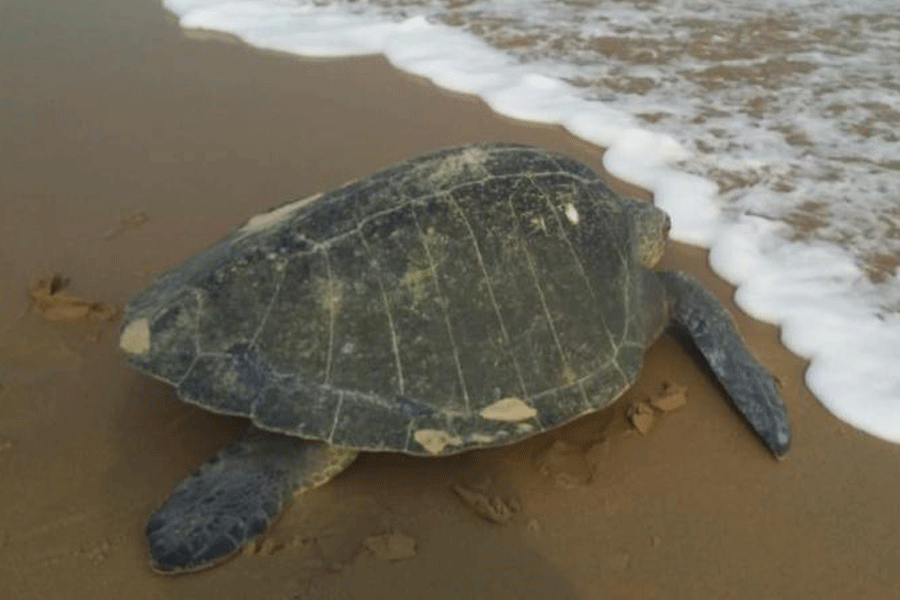An Olive Ridley turtle, fitted with an identification tag by the Zoological Survey of India (ZSI) at the Rushikulya river mouth in Ganjam on March 27, 2022, was found dead at the Puri beach on December 1.
The carcass of the turtle that had washed ashore in Puri was spotted by a tourist who alerted the ZSI authorities.
Sources said the turtle had left the Odisha coast after the tagging and was on its way back to the state coast for mating and nesting. During the course of its journey, it was believed to be strangulated after getting caught in the nets of a trawler.
Fishing trawlers have been taking a heavy toll on Olive Ridley turtles visiting the Odisha coast for mating every year.
Confirming this, Anil Mohapatra, a scientist with the ZSI’s Estuarine Biology Regional Centre, Gopalpur, told The Telegraph: “This particular Olive Ridley was tagged by us during the mass nesting in March 2022 and later released to the sea. It was in all probability coming back to Odisha waters for mating and nesting.”
Mohapatra said: “Turtles travel a long way in the sea. A turtle which was tagged on February 28, 2023, at Rushikulya in the Ganjam district during mass nesting of Olive Ridleys travelled nearly 1,200km in six months. It was found dead in Sri Lanka on August 22, 2023.”
Another Olive Ridley expert and senior scientist Basudev Tripathy said that the turtle that washed up on the Puri beach was perhaps on its way to Odisha coast for nesting. It must have been asphyxiated after getting caught in the nets of a fishing trawler.
Stating that Olive Ridley turtles travel thousands of kilometres in the sea, Tripathy added: “Another turtle which was tagged on April 4, 2022, at Rushikulya was found dead in Beruwala in Sri Lanka on January 5, 2023.”
At the time of tagging, the researchers put metal flippers on the turtles marked with specific numbers for identification. These are uniquely numbered manual tags, The tag carries all the information about the travel of the turtle in the sea. It also carries an e-mail Id.
This year, the turtles started arriving on the coast of Odisha, particularly Gahirmatha, Rushikulya and Devi River mouth beaches, from mid-November and will continue to mate in the sea till January end. Once mating is over, they will crawl up to the beach to lay eggs. Mass nesting of the turtles is a natural phenomenon known as “Arribada” in Spanish. The process of laying eggs starts between February and March and they leave Odisha coast in the month of May.
“The mass arrival of the turtles has been delayed this time because of unfavourable weather conditions. Their number is likely to increase after a fortnight,” said Tripathy, adding that the movement of Olive Ridley turtles, who traverse thousands of miles in the sea to reach the Odisha coast, remains a mystery.
Tripathy said: “We have urged the government of India to do a satellite telemetry tracking of the turtles. We had experimented with this from 2006 to 2010. But it involves a lot of money. Now if we get permission and the required funds, we will start it again.”
The nesting exercise takes place along the coast stretching from Gahirmatha in Kendrapara to Rushikulya river mouth.











